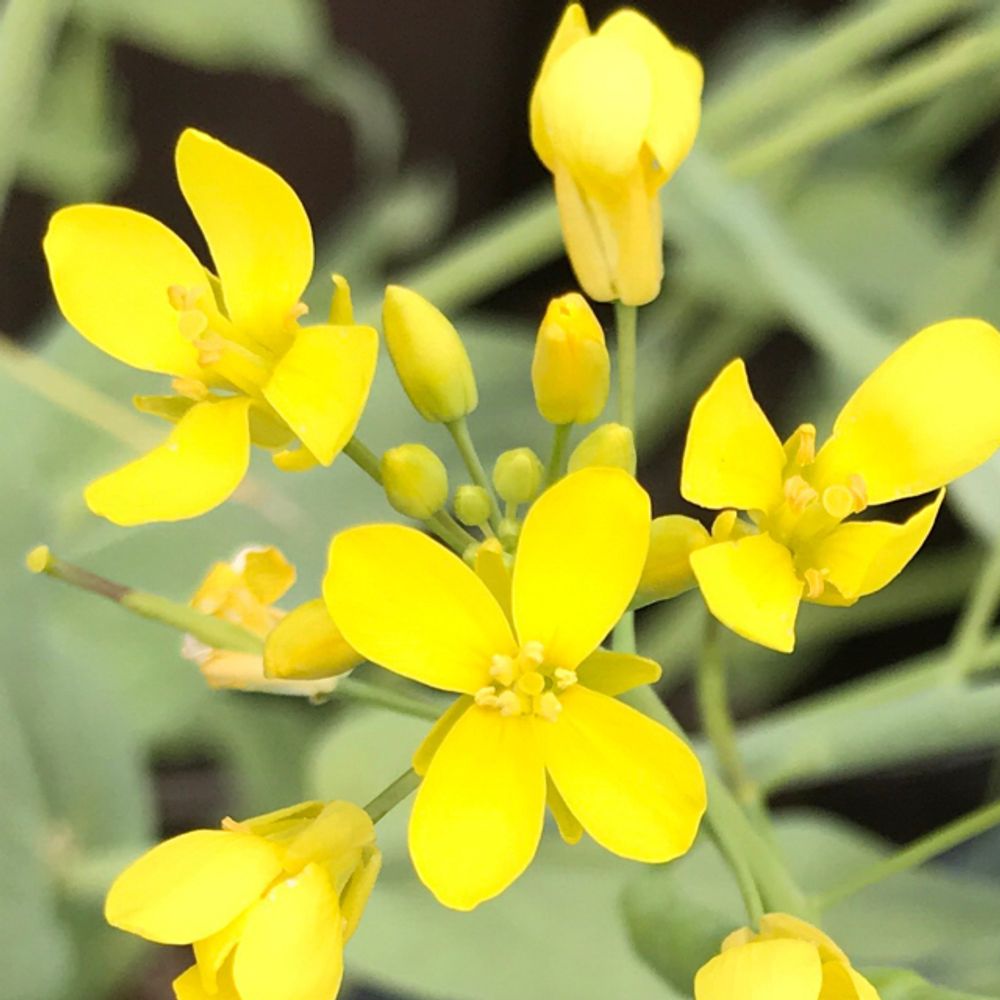Mustard
(Brassica)

Description
Brassica is a genus of plants in the mustard family (Brassicaceae). The members of the genus are informally known as cruciferous vegetables, cabbages, or mustard plants. Crops from this genus are sometimes called cole crops—derived from the Latin caulis, denoting the stem or stalk of a plant. The genus Brassica is known for its important agricultural and horticultural crops and includes a number of weeds, both of wild taxa and escapees from cultivation. Brassica species and varieties commonly used for food include broccoli, cauliflower, cabbage, choy sum, rutabaga, turnip and some seeds used in the production of canola oil and the condiment mustard. Over 30 wild species and hybrids are in cultivation, plus numerous cultivars and hybrids of cultivated origin. Most are seasonal plants (annuals or biennials), but some are small shrubs. Brassica plants have been the subject of much scientific interest for their agricultural importance. Six particular species (B. carinata, B. juncea, B. oleracea, B. napus, B. nigra, and B. rapa) evolved by the combining of chromosomes from three earlier species, as described by the Triangle of U theory. The genus is native to Western Europe, the Mediterranean and temperate regions of Asia. Many wild species grow as weeds, especially in North America, South America, and Australia. A dislike for cabbage or broccoli can result from the fact that these plants contain a compound similar to phenylthiocarbamide (PTC), which is either bitter or tasteless to people depending on their taste buds. Almost all parts of some species or other have been developed for food, including the root (rutabaga, turnip), stems (kohlrabi), leaves (cabbage, collard greens, kale), flowers (cauliflower, broccoli), buds (Brussels sprouts, cabbage), and seeds (many, including mustard seed, and oil-producing rapeseed). Some forms with white or purple foliage or flowerheads are also sometimes grown for ornament. Brassica vegetables are highly regarded for their nutritional value. They provide high amounts of vitamin C and soluble fiber and contain nutrients with anticancer properties: 3,3'-diindolylmethane, sulforaphane and selenium. Boiling reduces the level of anticancer compounds, but steaming, microwaving, and stir frying do not result in significant loss. Steaming these vegetable for three to four minutes is recommended to maximize sulforaphane. Brassica vegetables are rich in indole-3-carbinol, a chemical which boosts DNA repair in cells in vitro and appears to block the growth of cancer cells in vitro. They are also a good source of carotenoids, with broccoli having especially high levels. Researchers at the University of California at Berkeley have recently discovered that 3,3'-diindolylmethane in Brassica vegetables is a potent modulator of the innate immune response system with potent antiviral, antibacterial and anticancer activity. However, it also is an antiandrogen but is known to be antiandrogenic only in hormone-sensitive prostate cancer cells. These vegetables also contain goitrogens, some of which suppress thyroid function. Goitrogens can induce hypothyroidism and goiter in the absence of normal iodine intake.
Taxonomic tree:







